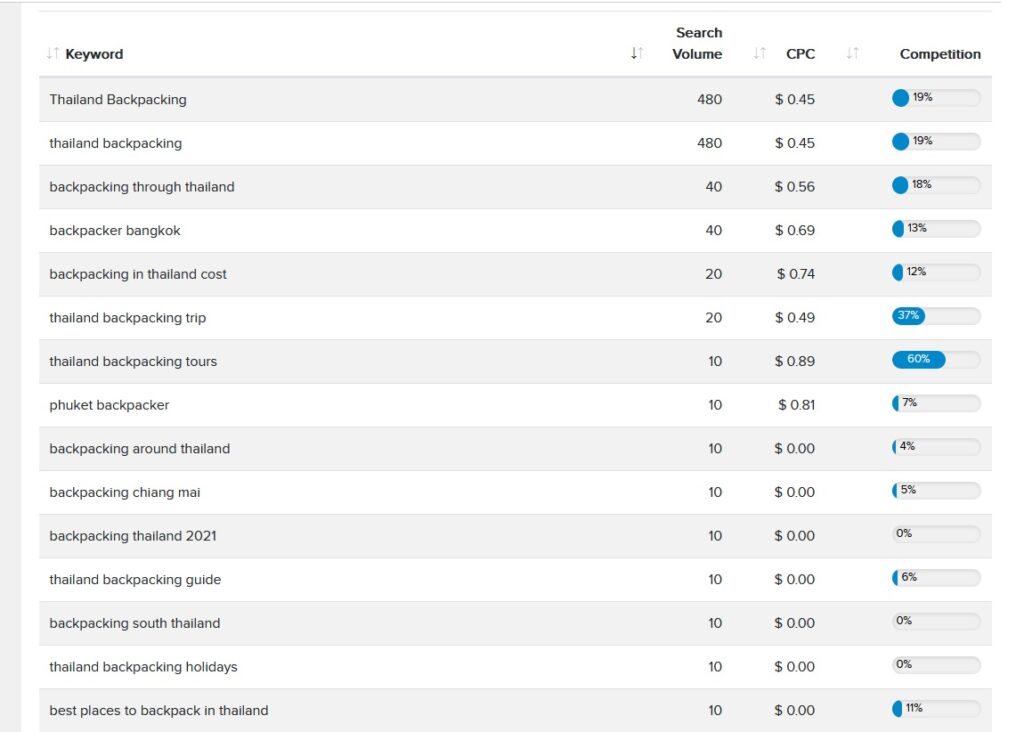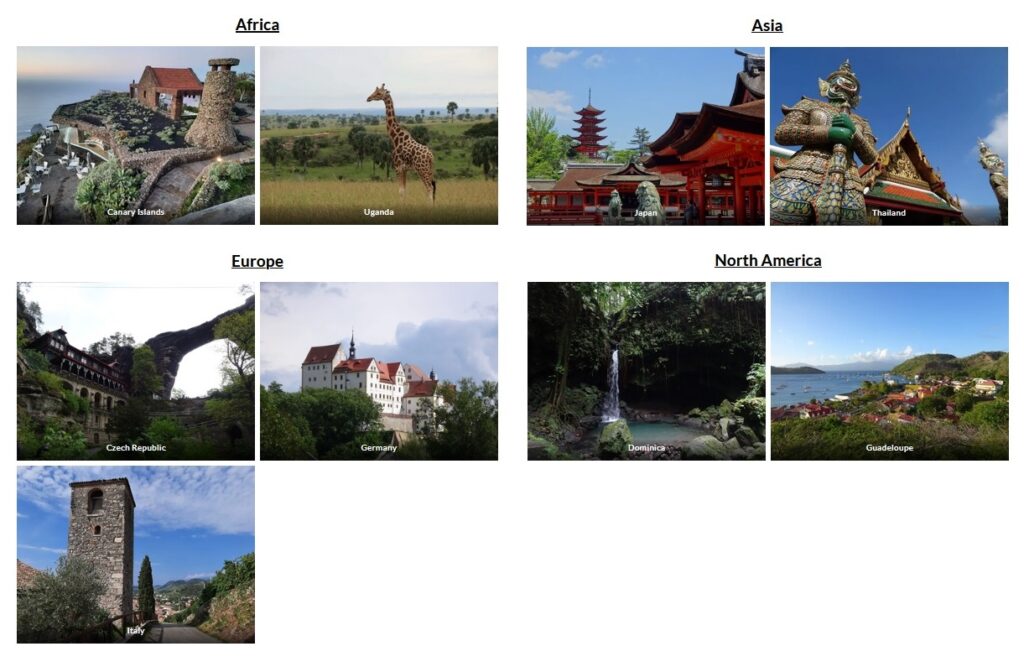When I started Perchance to Roam about a year ago, I set out wanting to do it right, so I read a lot of articles by other bloggers detailing how they started their own blogs. There were a number of observations that almost everyone made in their “How to start a Blog” Post and while a lot of them turned out to be true, I kept encountering a number of puzzling claims that I didn’t find to be true at all.
Twelve months later, I feel like a know a lot more about the process involved in blogging, while I’m also aware that I still have a ton of stuff to learn. To help other budding bloggers, I decided to compile a few of the most commonly encountered claims about travel blogging that just didn’t turn out to be true for me.
I’m aware that everyone’s experience varies, and stuff that worked or didn’t work for me might turn out completely different for other bloggers. Still, I found it necessary to offer a small voice of dissent to some of these seemingly unchallenged axioms I encountered so frequently. Here are the 5 surprising things I learned in my first year of Blogging.
Are you thinking of starting a Blog yourself? I recommend using BlueHost for your Webhosting. I’m using it myself and find it affordable, reliable and easy to use. You can sign up here.
This post may contain affiliate links, and I might earn a small commission at no additional cost to you. For more info, click here.
5 Persistent Blogging Myths Debunked
It does not take that long for Posts to rank on Google
One thing I read almost everywhere is that it takes forever for Google to rank your posts. Most people stated times of about 6 Months, some said it takes 8 to 12 months until your site starts ranking on Google.
It’s true that your site’s content will successively rank higher as your Google Domain Authority increases through age, Backlinks and traffic. Still, it only took about two weeks for my early posts to appear on Google, and some of them (like my Dominica Itinerary) jumped to the top of Google Search almost immediately.

This goes to show that it’s possible to get decent Organic Search Traffic almost right from the start as long as you don’t pick super competitive topics for your early posts, which in turn will increase your motivation as you can see that people are actually interested in reading your content.
(Basic) SEO is not that complicated
SEO (Search Engine Optimization) is super important and something I knew almost nothing about when I started blogging. There are tons of courses out there that offer SEO Strategy 101 and while I’m sure a lot of them have some useful information to offer, I found that many of the decisions around finding the right keywords are actually quite intuitive.
I usually just ask myself what I would hammer into Google to find certain information, then I try googling the phrase and if there’s not a billion of pages listed with the same exact wording, I’m going for it. It’s worked alright for me so far. If you’re unsure about that approach, there are plenty of Keyword Research Tools out there (like this one, for instance). Others offer at least a few searches per day, like this one.

Once your pages are listed on Google, you can also use Google Search Console’s useful features to find out for which keywords and queries your site gets the most impressions and try to focus on similar content. Again, there certainly is a learning curve involved in SEO tactics, and I’m sure I still have a lot of skills to unlock there, but it’s not the impossibly complicated thing it’s made out to be.
You don’t need a ton of time
Something that used to deter me from starting a Travel Blog was that I expected it to take up a lot of my time that I just might not have. I’ve read articles where people suggested posting a Blog entry daily for the first six months to get any traction at all, while others recommended spending at least 8 hours on composing a post (Quality over Quantity and all that).
You don’t have to be a maths prodigy to grasp that it’s just not possible to spend 8 hours daily writing a Blog while you’re working full time (or, in my case, writing your PhD). Again, don’t be deterred when reading stuff like that. While it’s probably true that your site will grow faster with a higher publishing frequency, it’s not necessary to get traffic to your site.

I’ve started by uploading two posts a week and have switched to one post a week a while back. I might increase my frequency again in the future, but for now, this strategy has brought a steady increase in traffic to my site as I’ve grown to over 10,000 page views a month.
Sure, this is still very modest when you compare it to a lot of other blogs, but it’s also not too shabby for something I’ve been doing for only around an hour a day for about a year.
Monetizing early isn’t a bad idea
A lot of people state that you shouldn’t think about monetizing your site until you have at least 10,000 monthly page views, mainly because you won’t make a lot of profit before that. Still, I’d say it’s better to make 1 or 2 Dollars a day instead of nothing.
With Ad Programs like Ezoic dropping their minimum traffic requirement, there’s really no reason not to start monetizing your blog as soon as possible. I also feel it’s honest towards your readers to signal early on that you want to at least make a little money off your site instead of making everyone angry for “selling out” later on;-)
Another total no-brainer in the monetizing department are Affiliate Links. If you’re recommending hotels and products anyway, why not do it in a way that gives you a little kickback at no extra cost to your readers? It’s a win-win situation for sure.
Pinterest isn’t the traffic goldmine it’s made out to be
I’ve lost count of how many times I’ve read reports of people saying that 70% and more of their traffic in their first year of Blogging came from Pinterest. It sounded amazing enough that I signed up for Pinterest almost immediately, and I’ve been consistently sharing my blog posts there since.
For me, one year of pinning, re-pinning and sharing on Group Boards resulted in the grand total of about 120 followers.

The outbound clicks I’ve been getting from Pinterest amount to about 50. Yep, that’s right: 50 clicks from pins to my website in one year. I got more daily clicks from Google in my second week. Somehow, it just doesn’t seem to work for me.
As far as I can tell, not a single of my pins shows up in search (which according to Pinterest Customer Service is perfectly normal, as only some pins show up there). The only reason I’m still bothering with it is that I’m expecting a sudden miraculous change in the situation, but frankly, I don’t think this is very likely.
Maybe the people claiming huge amounts of Pinterest Traffics already had accounts with tons of followers, or maybe it just works very differently for everyone. Whatever may be the case, given my personal experience I’d recommend to concentrate on SEO rather than Pinterest and to pull traffic in via Google, which has been so much more efficient for me.
How to approach Starting a Blog
So, there you have it: five claims about Travel Blogging I kept encountering time and time again, which simply haven’t proofed true for me. Again, I’m not claiming my experience is universal, but I found it important to offer a different viewpoint to the majority of Blogging Guides on the Web.
So what can you take away from all that? Just start your blog, try different approaches and pick the ones that work best for you. The definite singular approach to Blogging success doesn’t exist, and there’s a lot of trial and error involved.
At the same time, I hope I could show you that it’s not a huge problem if something you tried didn’t work for you, even though so many people claim it does. There are always alternative approaches – the most important thing is to stick with it and to find your own ideal process, and you’ll be on your way to starting your successful Blog, guaranteed:-)
See also
The 5 most Common Reasons Not to Travel (And Why They’re Wrong)

This works for all sorts of blogs! (But perhaps you used travel blog for SEO reasons) Thank you for the ideas and also the data. Really helpful!
Hi Anna,
You’re absolutely right – this should work for others blogs as well. The title refers to the niche both for SEO reasons and because this is a Travel Blog, so I wanted to give an example from my personal experience. I’m glad you found it helpful!